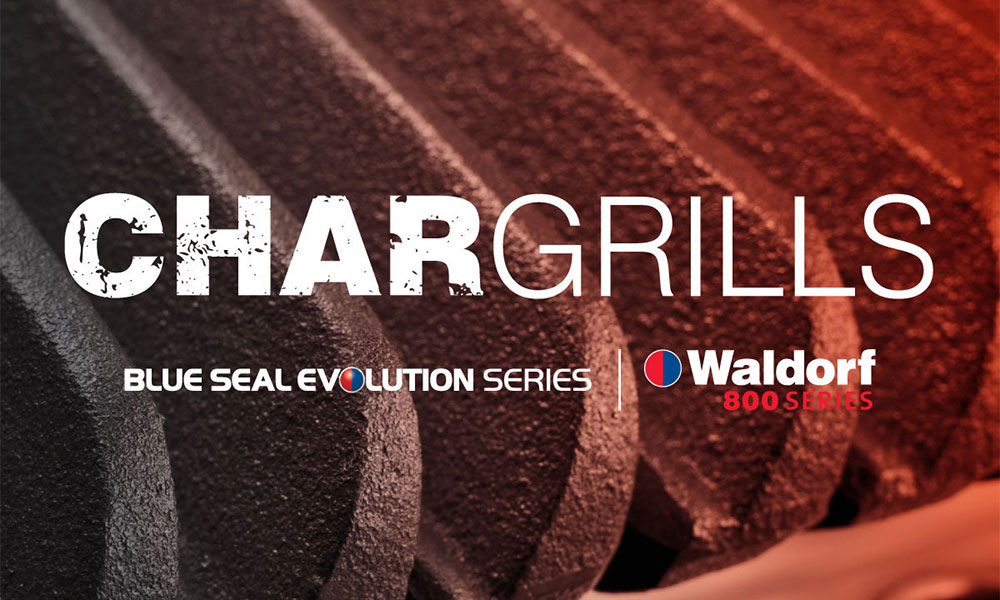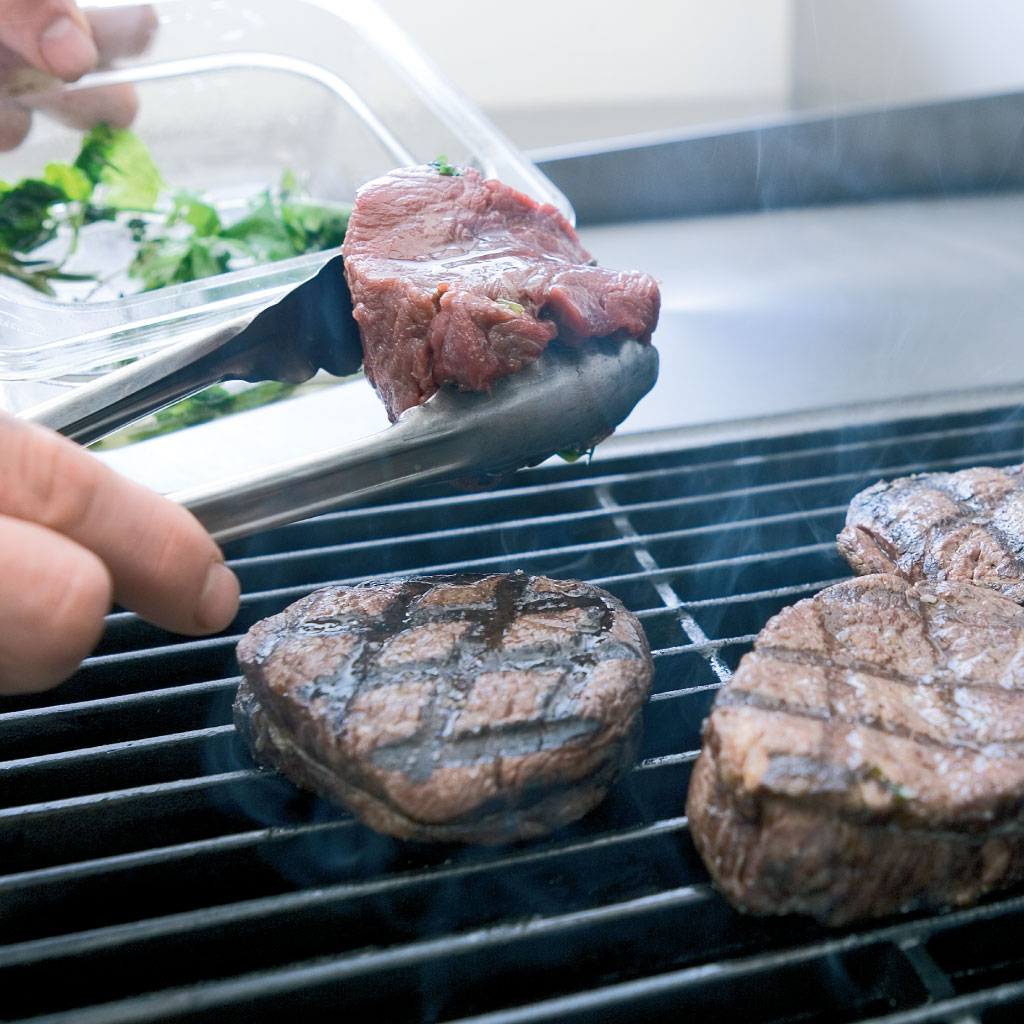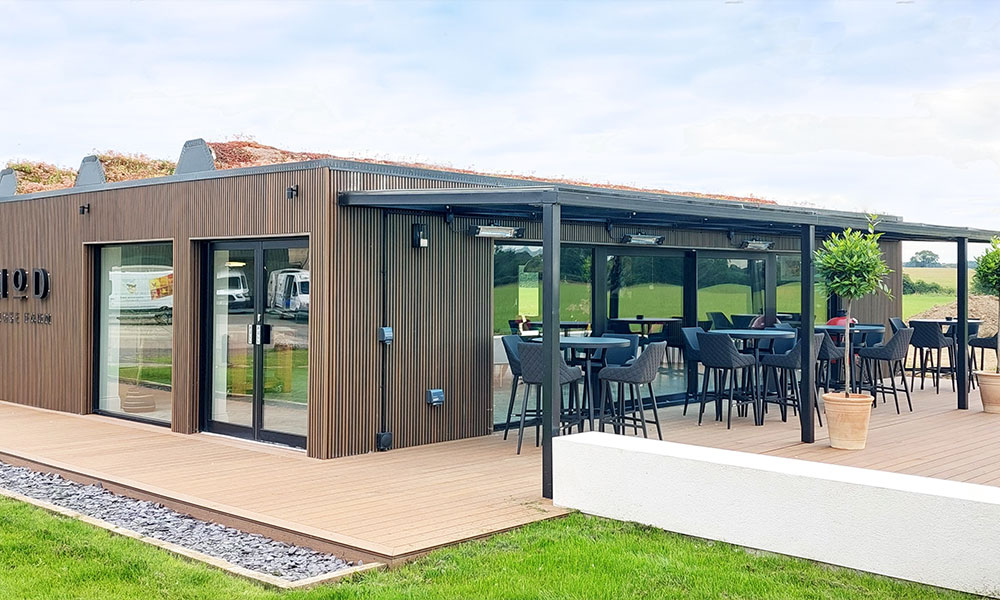
We all know a thing or two about steak. It is a staple dish in many of our restaurants. So, when it comes to creating the perfect chargrilled steak, which commercial cooking equipment yields the tastiest results?
Chargrilling over coals or open flame – what’s the difference?
It is unusual to see professional chefs cooking over coals because it is just too difficult to regulate the temperature precisely. It takes a long time to perfect the skills required to cook a great steak over coals.
An inexperienced chef is likely to overcook the crust while undercooking the inside, which is not what customers want. The process is also very fast, which means that the steak has no time to take on the flavour. It’s ironic, but you’re unlikely to achieve that “coal flavour” you’re looking for by actually cooking over coals.
However, over an open flame you have much greater control over the temperature, and can regulate it to suit whatever you’re cooking. You’ll also get a better crust on your meat, and you’re less likely to over- or undercook it – producing consistently juicy, delicious steaks every time.
What about the reverse sear method? Is this recommended?
The reverse sear method is a much longer process requiring additional prep time. Sous vide is the most well-known reverse sear style, and while it can add extra flavour to the meat, it is incredibly time-consuming. It needs to be cooked first, then finished off on the chargrill to create the crust.
When it is done well, the results can be fantastic – an experienced sous vide chef can produce a steak that is pink right up to the edges, with no visible grey and a great crust. But with so many variables at play, sous vide often yields inconsistent results. It also requires an awful lot of water – about 20 litres!
Sous vide cooking is better suited to gastronomy restaurants that specialise in this style. For most chefs it’s simply t too much labour, too much time, and too much hassle, when you’re just trying to produce excellent, chargrilled steaks.
The ultimate steak is best created over an open flame – the chef has more control over the temperature, allowing them to cook the steak exactly as requested, and the flames give a superior crust. This method actually requires more skill and experience, too. It’s a quicker process, so the chef really needs to be on the ball. This is made much easier, of course, when you’re working with the right equipment, as it will give you better control and consistency and yield superior results.
What’s the secret to creating a perfectly-charred steak?
First, allow the steak to come to an ambient temperature, season with salt and rub with an oil with a higher flash point, such as vegetable or canola.
Make sure the char bars are nice and hot, so they’ll give you good, clear markings, and resist the temptation to turn the steak too early – wait until it’s developed those marks! For thicker steaks you may need to wait until you can see up the side that it’s cooked one third through, although this will depend on how the customer wants it cooked.
Bonus pro tips from the chef in a commercial kitchen:
1. For the perfect criss-crossed pattern, leave the steak on the grill for a few minutes and then rotate it to add the extra lines.
2. Always cook steaks uncovered so they develop a nice crust. Covering with a hood creates steam and can cause the steak to become overcooked.
What about resting time?
Resting time is so important, as this is when the juices settle back into the meat. Cooking places huge amounts of stress on the cut, and it needs time to relax before it’s sliced. If you scrimp on the resting time, you’ll find a river of red liquid running onto the plate as soon as the steak is cut.
Resting time depends on both the cut and size of the steak, but on average, a 200g steak needs to rest for around three to five minutes. For larger cuts, a good rule of thumb is one minute of rest per 100g of weight.

Why are the Waldorf and Blue Seal Chargrills so good for the commercial kitchen? What sets them apart?
Professional chefs love cooking on the Waldorf and Blue Seal chargrills because they’ve been designed to deliver heat evenly for more consistent results.
The cast iron baffles on the Blue Seal and Waldorf chargrills range have been specially designed to produce a cylindrical flame, which radiates heat to the char bars without creating hot spots. When used in the flat position, the heat is distributed perfectly throughout the grill, giving you perfect results every time, no matter where you place the produce.
This makes them ideal for cooking burgers, chicken, or fish. The evenly-heated surface also allows the juices to rise back up off the heated radiant baffle, adding greater complexity to the flavour.
The grills can also be reversed, and the thinner char bars can be used to cook steak to any temperature, without burning. The thinner bars are placed on an incline to accommodate different temperatures – rare and medium are positioned at the front and middle of the grill, where there’s more heat and good char markings can be achieved without overcooking the steak. Well done steaks are positioned at the rear, as they are further from the heat and can be cooked longer without becoming burnt.
This helps the busy chef in the kitchen keep track of multiple orders, because you’ll always be able to distinguish between your rare, medium, and well-done steaks – rare art the front, medium in the middle, and well done at the rear. It also allows excess marinade to run off into the scrap tray, rather than falling on the heated baffle, giving you a cleaner flavour on your steak.
Waldorf and Blue Seal Chargrills have a flexible, drop-on griddle – what’s that all about?
The Waldorf and Blue Seal chargrill feature a 12mm drop-on griddle plate, which is fantastic if you don’t have room for a separate griddle, or if you only need to use one on special occasions.
This system allows you to take off a section of the chargrill plate and pop the griddle on, so you can cook different foods on the same footprint. For example, you could be frying eggs, halloumi, or flipping streaky bacon and smashed burgers on one side while cooking steaks on the grill bars on the other.
It is efficient and flexible, which we all know is a must in a busy commercial kitchen. Once you are done with the griddle plate, simply let it cool, remove it, and put the char bars back into place, ready for the next service.
What about cleaning and maintenance? Are the Waldorf and Blue Seal commercial char grills easy to look after?
They are very easy to clean, and if they’re well-maintained they will last for many years. The char grill components can all be removed for thorough cleaning, and they’re easy to put back together.
Waldorf and Blue Seal commercial char grills are renowned in the industry for their longevity and reliability. They’re built to last in even the toughest of kitchen environments, and there are plenty of options to choose from to suit any kitchen footprint. Waldorf and Blue Seal char grills are available in various sizes and widths from 300mm to 1200mm, with a range of bases to suit any kitchen, including:
Bench top – comes with 4x adjustable heavy-duty stainless steel bench legs:
Leg Stand – Fully modular and framed top for char grill connection:
Cabinet bases – Fully modular, double skin stainless steel interior and exterior with adjustable stainless steel legs:




